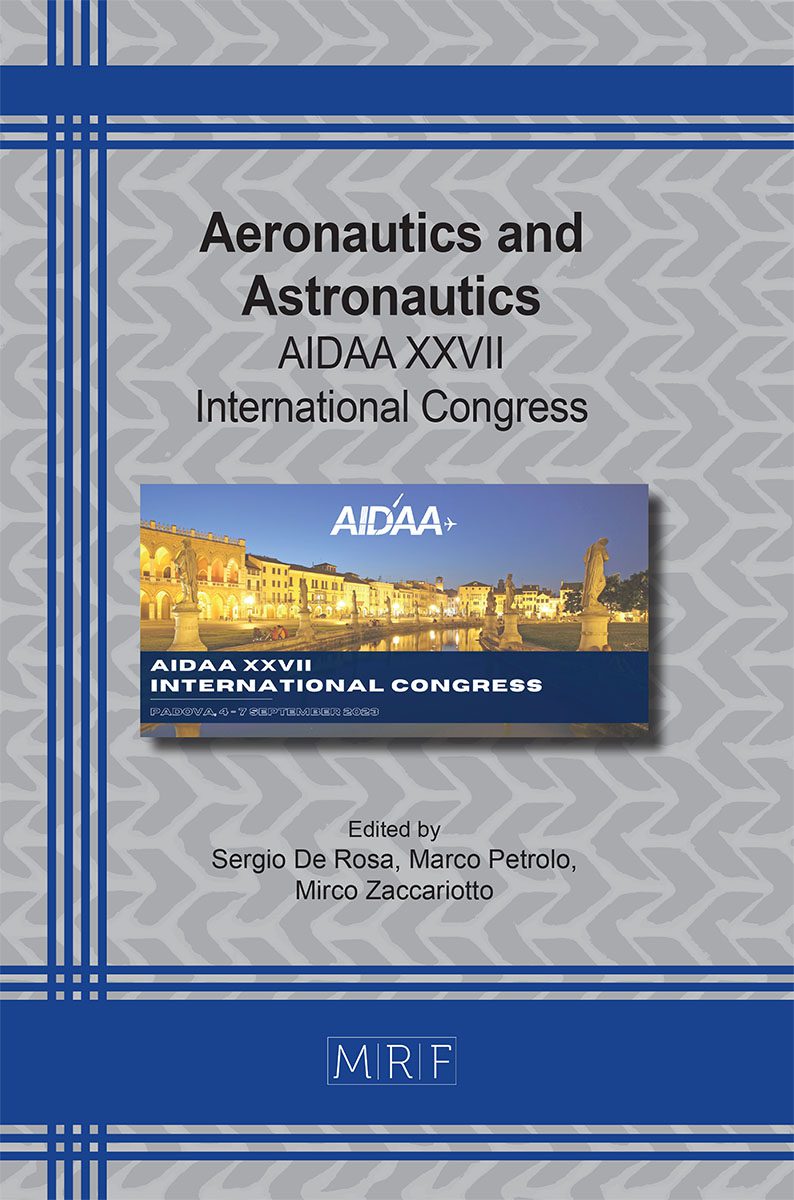Deployment profile analysis for tethered deorbiting technologies
G. Polato, A. Valmorbida, A. Brunello, G. Anese, S. Chiodini, G. Colombatti, E.C. Lorenzini
download PDFAbstract. Over the past few decades, the man-made space debris has become an increasingly concerning problem for future space missions. Fortunately, some innovative “green” deorbiting technologies have been emerged. Among these strategies, electrodynamic tethers have demonstrated to be a promising option, thanks to their passive and fuel-free characteristics. By leveraging the Earth’s ionosphere and the geomagnetic field, an electrodynamic tether generates a Lorentz drag force, that can significantly reduce the altitude of a satellite and ultimately cause it to re-enter the atmosphere. The goal of this research is to investigate a critical part of satellite tethered technology, namely the deployment phase. To accomplish this, we utilized a software tool developed by the University of Padova to simulate the dynamics of the deployment phase and optimize its trajectory, in order to meet the desired boundary conditions. This paper gives a description of the software and shows the results of a sensitivity analysis on the trajectory profile that examines the impact of variations in the release angle of the tether and the speed profile actuated by the motor that controls the deployment speed.
Keywords
Tether Deployment, Optimization, Deorbiting, Clean Space
Published online 11/1/2023, 5 pages
Copyright © 2023 by the author(s)
Published under license by Materials Research Forum LLC., Millersville PA, USA
Citation: G. Polato, A. Valmorbida, A. Brunello, G. Anese, S. Chiodini, G. Colombatti, E.C. Lorenzini, Deployment profile analysis for tethered deorbiting technologies, Materials Research Proceedings, Vol. 37, pp 553-557, 2023
DOI: https://doi.org/10.21741/9781644902813-121
The article was published as article 121 of the book Aeronautics and Astronautics
![]() Content from this work may be used under the terms of the Creative Commons Attribution 3.0 license. Any further distribution of this work must maintain attribution to the author(s) and the title of the work, journal citation and DOI.
Content from this work may be used under the terms of the Creative Commons Attribution 3.0 license. Any further distribution of this work must maintain attribution to the author(s) and the title of the work, journal citation and DOI.
References
[1] Y. Chen, et al., History of the tether concept and tether missions: a review, International Scholarly Research Notices 2013 (2013). https://dx.doi.org/10.1155/2013/502973
[2] M. Kruijff, Tethers in Space: A propellantless propulsion in-orbit demonstration., Ph.D. Thesis, Technical Univ. of Delft, Delft, The Netherlands, (2011).
[3] E. C. Lorenzini, et al., Control and flight performance of tethered satellite small expendable deployment system-II, Journal of Guidance, Control, and Dynamics 19.5 (1996): 1148-1156. https://doi.org/10.2514/3.21757
[4] P. Mantri, Deployment Dynamic of Space Tether Systems, Ph.D. Thesis, Faculty of North Carolina State University (2007).
[5] from: https://en.wikipedia.org/wiki/Archimedean_spiral
[6] from: https://research.dii.unipd.it/mts/
[7] Team Commands, I. Saclay, BOCOP: an open-source toolbox for optimal control. (2017), See: https://bocop.org
[8] G. Sarego, et al., Deployment requirements for deorbiting electrodynamic tether technology, CEAS Space Journal 13.4 (2021): 567-581. https://doi.org/10.1007/s12567-021-00349-5












